The emotional toll of financial distress is causing health problems for many in the aftermath of the housing bubble.


Irvine Home Address … 1 GREENFIELD #18 Irvine, CA 92614
Resale Home Price …… $363,000

If I was sick like you,
I would feed the fire
I would light it up
And watch it all drop down
Adelitas Way — Sick
Not long ago, I wrote the post The housing bubble and crash is causing great psychological harm. It isn't only emotionally that people are being hurt by the collapsing housing bubble. The emotional distress is leading to real physical symptoms.
Tying Health Problems to Rise in Home Foreclosures
By S. MITRA KALITA — AUGUST 31, 2011
The threat of losing your home is stressful enough to make you ill, it stands to reason. Now two economists have measured just how unhealthy the foreclosure crisis has been in some of the hardest-hit areas of the U.S.
New research by Janet Currie of Princeton University and Erdal Tekin of Georgia State University shows a direct correlation between foreclosure rates and the health of residents in Arizona, California, Florida and New Jersey. The economists concluded in a paper published this month by the National Bureau of Economic Research that an increase of 100 foreclosures corresponded to a 7.2% rise in emergency room visits and hospitalizations for hypertension, and an 8.1% increase for diabetes, among people aged 20 to 49.
Each rise of 100 foreclosures was also associated with 12% more visits related to anxiety in the same age category. And the same rise in foreclosures was associated with 39% more visits for suicide attempts among the same group, though this still represents a small number of patients, the researchers say.
Teasing out cause and effect can be delicate, and correlation doesn't necessarily mean foreclosures directly cause health problems. Financial duress, among other issues, could lead to health problems—and cause foreclosures, too.
Foreclosures are a symptom of overall financial distress. Many people quit making payments because they lost their jobs. However, many people couldn't afford the houses they were in because the loans they took out. Lenders who peddled Option ARMs and other toxic loan products are directly responsible for the financial distress and foreclosures these loans caused.
The economists didn't find similar patterns with diseases such as cancer or elective surgeries such as hip replacement, leading them to conclude that areas with high foreclosures are seeing mostly an increase of stress-related ailments.
Tuesday brought news of further weakness in the housing market as the closely watched S&P/Case-Shiller home-price index came in 5.9% lower for the second quarter from a year earlier. Continued job losses and economic uncertainty could weigh on home prices and make for another wave of foreclosures, economists say.
The double dip will make for another wave of foreclosures, but it won't be from the newly unemployed, it will be from the legions of overextended borrowers who finally capitulate. The bear rally of 2009-2010 was the last gasp of denial these people had. The ugly truth of a weak economy and a huge overhang of supply is becoming common knowledge, and the market bulls are having difficulty maintaining their denial.
It may not just be foreclosure victims arriving at hospitals—but neighbors also grappling with depleting equity in their biggest investment.
“You see foreclosures having a general effect on the neighborhood,” Ms. Currie says. “Everybody's stressed out. There is a connection between people's economic well being and their physical well being.”
The situation got so bad for Patricia Graci, a 51-year-old Staten Island, N.Y., resident, that she canceled a recent court appearance related to the foreclosure on her house because she couldn't get out of bed. After her husband lost his job as a painter in 2008, the Gracis relied on savings to pay their mortgage for two years.
“Everything was going downhill. My savings were going down to nothing,” says Ms. Graci. “When I realized the money wasn't there anymore, I started getting very anxious and depressed.”
Being broke will do that.
She says her lender advised her to default on her mortgage to qualify for a loan modification. Ms. Graci, who was an assistant bank manager and already had rheumatoid arthritis, says she began seeing a therapist and landed in the hospital with difficulty breathing in December 2009. A few weeks later came the foreclosure notice from the bank.
“They told me it was more anxiety and stress that made me wind up in the hospital than the arthritis,” Ms. Graci says. After repeatedly missing work due to illness, Ms. Graci went on long-term disability.
Sad case. She should feel better once the foreclosure is complete. Her attachment to her old home which is causing her so much suffering will be broken. Perhaps it sounds heartless but I believe the foreclosure is the most compassionate outcome for this woman now. She and her husband can no longer afford their home.
The areas that have the highest foreclosure rates also tend to have a large portion of their population unemployed, underemployed or uninsured. Ms. Currie says the research accounted for this by instituting controls for persistent differences among areas, such as poverty rates, as well as for county-level trends. Much of the 2005-2009 period examined came before unemployment peaked, too, she says. The researchers examined hospital-visit numbers and foreclosure rates in all ZIP Codes that had those data available.
They found that areas in the top fifth of foreclosure activity have more than double the number of visits for preventable conditions that generally don't require hospitalization than the bottom fifth.At the local hospital in Homestead, Fla., a city of mostly single-family, middle-class homes about 30 miles from Miami, the emergency room has been bustling. Emergency visits to the hospital in 2010 more than doubled from 10 years earlier to about 67,000, and emergency department medical director Otto Vega says they will surpass 70,000 this year. Homestead has the highest rate of mortgage delinquencies in the U.S.—in June, 41% of mortgage holders in the hardest-hit ZIP Code of Homestead were 90 days or more past due on payments, according to real-estate data firm CoreLogic Inc.
Nearly half the city is delinquent on their mortgage and squatting in their homes. That's an astonishingly high number.
While the most common ailments are respiratory problems and pneumonia, Dr. Vega notes an increase in psychosomatic disorders, such as patients with chest pain and shortness of breath, and others who feel suicidal. “A lot of young people, less than 50 years old, have chest pain. You know it's anxiety,” he says.
Nationwide, overall emergency-room visits have also been rising, growing 5% from 2007 to 127.3 million in 2009, according to the American Hospital Association. But inpatient stays have largely kept pace with population growth over the last decade, says Beth Feldpush, a vice president for policy and advocacy at the National Association of Public Hospitals.
The number of people covered by employer-sponsored insurance has been falling, she says. “When people don't have insurance, they put off seeking care for too long and end up in the emergency room.“
The lack of preventative care is likely the real cause for the dramatic increase in emergency room visits.
And some of those seeking treatment had medical conditions before foreclosure—but the stress of losing their homes has exacerbated their ailments.
In 2008, Norman Adelman of Freehold, N.J., called his lender to ask for a forbearance of three or four months, saying he was about to undergo knee-replacement surgery. The lender complied and Mr. Adelman, who runs a home-energy business, says he began scaling back his work. He underwent needed tests and doctor visits.
After two months of not paying his mortgage, he successfully applied for a loan modification, taking his monthly payment from $2,700 to $1,900. But then the loan was sold—and a new servicer didn't recognize the terms of the arrangement, he says.
Whether he deserved the modification or not, if the lender sold the loan to a new lender who didn't honor the agreement, this borrower has good cause to be angry.
Mr. Adelman is fighting the new lender but says he has been in and out of the hospital for the last two years. He never had his knees replaced and is now on antidepressants and antianxiety medication.
“He's deteriorated. He's had sleepless nights,” says his wife, Shulamis. “You always have this fear of being thrown out. He's just gotten worse and worse from not sleeping.”
Earlier this month, after working with the nonprofit Staten Island Legal Services, Ms. Graci received a trial loan modification. “I'm happy but I am still scared,” she says. “I want a permanent solution. I don't know if I am in the clear.”
Write to S. Mitra Kalita at mitra.kalita@wsj.com
There is unquestionably an increase in anxiety caused by the recession, and foreclosures are a part of that problem. These reports leave me with mixed emotions. Part of me feels bad for the circumstances these people find themselves in. But part of me gets annoyed at the typical American whiner who can't put on a stiff upper lip and deal with the problems life throws at them.
Financial distress is self inflicted — I know because I inflict it on myself as well. Giving up attachments and entitlements makes financial distress go away. People who are unwilling to accept a decrease in their standard of living when their income declines create their own misery. At least this story wasn't the lead in for a proposal for a massive government subsidy designed to preserve the entitlements of borrowers at the expense of the rest of us.
$8,000 in; $193,000 Out
The foreclosed former owner of today's featured property demonstrates why California housing is so appealing to commoners. This property was purchased for $160,000 on 5/12/1999. The owner used a $152,000 first mortgage and a $8,000 down payment. That's 5% down.
On 11/27/2002, the owner refinanced with a $212,000 first mortgage, and on 7/31/2003 refinanced again with a $211,000 first mortgage. With only $50,000 in mortgage equity withdrawal, the owner was at least attempted to manage the growth in their mortgage.
On 6/29/2004 the owner obtained a $150,000 HELOC. Any prudence was abandoned.
On 5/15/2007 Bank of America gave this borrower a $345,000 first mortgage. I say gave because this loan was really stupid, and the borrower defaulted a few years later.
Foreclosure Record
Recording Date: 03/29/2011
Document Type: Notice of Sale
Foreclosure Record
Recording Date: 12/22/2010
Document Type: Notice of Default
Bank of America moved quickly through the foreclosure process once they issued the NOD. They tried to lower the bid to get a third party to buy the property at auction, but their $257,200 opening bid still resulted in another REO.
I suspect Bank of America listened to an exuberant listing agent who led them to believe the property is worth $363,000. If it really were worth that much, a third party would have stepped up to buy it. Expect to see discounts on this one before it finally sells. Recent model-match comps are selling for $30,000 to $40,000 less.
 |
$324,900 |
0 miles
2 bd / 2 ba 1,140 Sq. Ft |
 |
$320,000
Sold on Jul 26, 2011 |
0 miles
2 bd / 2 ba 1,140 Sq. Ft. |
 |
$330,000
Sold on May 12, 2011 |
0 miles
2 bd / 2 ba 1,140 Sq. Ft. |
——————————————————————————————————————————————-
This property is available for sale via the MLS.
Please contact Shevy Akason, #01836707
949.769.1599
sales@idealhomebrokers.com


Irvine House Address … 1 GREENFIELD #18 Irvine, CA 92614
Resale House Price …… $363,000
Beds: 2
Baths: 2
Sq. Ft.: 1140
$318/SF
Property Type: Residential, Condominium
Style: Two Level, Contemporary
Year Built: 1984
Community: Woodbridge
County: Orange
MLS#: S670865
Source: SoCalMLS
Status: Active
On Redfin: 13 days
——————————————————————————
This lovely upper, corner Alders condo features 2 bedrooms, 2 full bathrooms, a spacious kitchen with newer appliances, recessed lighting, crown molding throughout, newer paint and carpet, indoor laundry, and an enclosed exterior storage space near entrance. The community features a swimming pool and beautiful, well-maintained grounds, and is conventiently located to John Wayne Airport, shopping, schools (UC Irvine), parks and more!
——————————————————————————————————————————————-
Proprietary IHB commentary and analysis ![]()
Resale Home Price …… $363,000
House Purchase Price … $160,000
House Purchase Date …. 5/12/1999
Net Gain (Loss) ………. $181,220
Percent Change ………. 113.3%
Annual Appreciation … 6.6%
Cost of Home Ownership
————————————————-
$363,000 ………. Asking Price
$12,705 ………. 3.5% Down FHA Financing
4.26% …………… Mortgage Interest Rate
$350,295 ………. 30-Year Mortgage
$114,788 ………. Income Requirement
$1,725 ………. Monthly Mortgage Payment
$315 ………. Property Tax (@1.04%)
$0 ………. Special Taxes and Levies (Mello Roos)
$76 ………. Homeowners Insurance (@ 0.25%)
$403 ………. Private Mortgage Insurance
$447 ………. Homeowners Association Fees
============================================
$2,965 ………. Monthly Cash Outlays
-$273 ………. Tax Savings (% of Interest and Property Tax)
-$482 ………. Equity Hidden in Payment (Amortization)
$19 ………. Lost Income to Down Payment (net of taxes)
$65 ………. Maintenance and Replacement Reserves
============================================
$2,296 ………. Monthly Cost of Ownership
Cash Acquisition Demands
——————————————————————————
$3,630 ………. Furnishing and Move In @1%
$3,630 ………. Closing Costs @1%
$3,503 ………… Interest Points @1% of Loan
$12,705 ………. Down Payment
============================================
$23,468 ………. Total Cash Costs
$35,100 ………… Emergency Cash Reserves
============================================
$58,568 ………. Total Savings Needed
——————————————————————————————————————————————————-



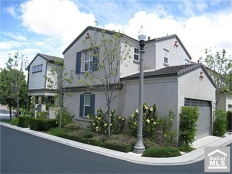
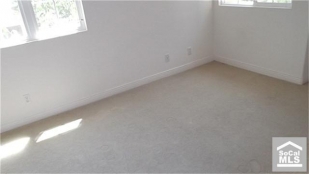



.png)











.png)












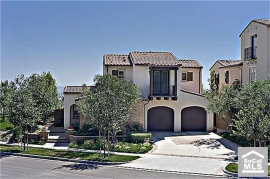
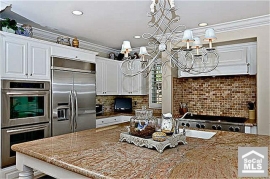


.jpg)

.png)

.png)



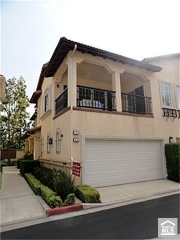
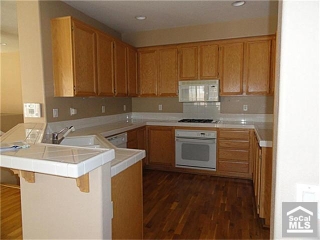

 Government intervention in financial markets is typically a bad idea. The usual result is to shift the consequences (losses) from those who deserve to bear the brunt of their mistakes — in this case lenders and borrowers — on to those who don't deserve to pay a price — in this case renters and ordinary taxpayers. What compelling reason is there to force renters who did not participate in the bubble mania to pay the bills?
Government intervention in financial markets is typically a bad idea. The usual result is to shift the consequences (losses) from those who deserve to bear the brunt of their mistakes — in this case lenders and borrowers — on to those who don't deserve to pay a price — in this case renters and ordinary taxpayers. What compelling reason is there to force renters who did not participate in the bubble mania to pay the bills?






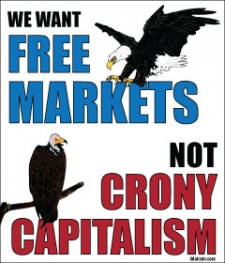


 That criticism is wrong on many levels. First, the basic premise that foreclosures should be reduced is wrong. Foreclosure are key to the financial recovery. If policymakers continue to define the problem incorrectly, they will continue to come up with solutions to the wrong problem which will inevitably create other problems.
That criticism is wrong on many levels. First, the basic premise that foreclosures should be reduced is wrong. Foreclosure are key to the financial recovery. If policymakers continue to define the problem incorrectly, they will continue to come up with solutions to the wrong problem which will inevitably create other problems.
